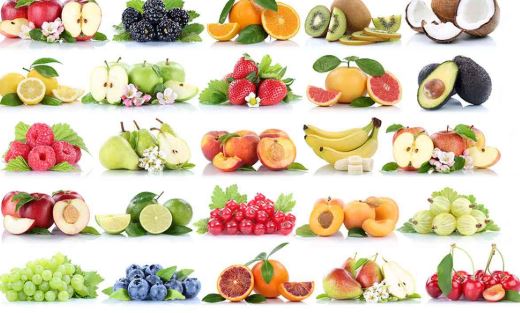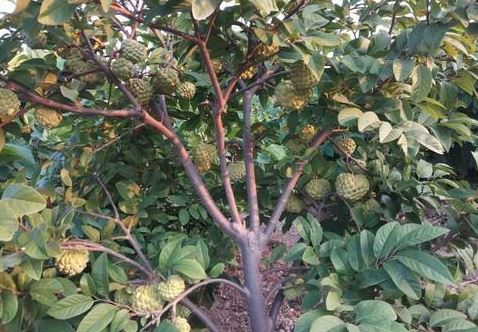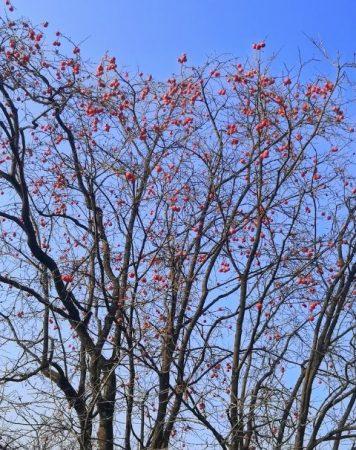In 2020 Don’t Just Plant Trees , Go For Fruit Trees
 Fruits For All
Fruits For All
Back in July 2018,a little perplexed with the vanishing fruit trees in our cities, (actually, trees in general too), we set out to find out if rumours of a rule against fruit trees were true. There was no such rule, as we found out.
But we did discover a well established view in government circles, that planting fruit trees in public spaces was a poor idea. The reasons cited were many, none really convincing. From difficulty of procurement, to the risk of people getting hurt in trying to pluck fruits, to even public disorder to get the ‘free’ fruits. To us, these excuses sounded a remedy worse than the problem, in a country with the high levels of poverty and deprivation as India.
So now that Copenhagen seems to be getting global validation, perhaps we can also appeal to our powers that be to take a relook at their mindset. After all, India remains blessed to operate in a weather zone that is most conducive to all kinds of fruits and vegetables, making us the world’s no. 2 producer, no less.
In smaller towns, where ‘great’ ideas from the big cities thankfully take time to reach, it is still a pleasure to see children enjoy the adventures of plucking fruits from roadside trees, or even see fruit trees grow outside houses without facing the sort of attacks our city administrators predict. Even in our biggest cities, some of the earliest settlers saw it fit to plant specific fruit trees outside their houses, some of which have survived development, and continue to be an object of curiousity and wonder for many. You can witness this in the main road of Chittaranjan Park, for instance, a Delhi locality populated predominantly by Bengal-origin residents. The road is still lined with Aegle marmelos , or bael trees, also known as Bengal quince or stone apple or wood apple. The Bael fruit is valued for its medicinal properties by east Indians in particular, and that has probably contributed to the trees survival. Of course, where the trees ran up against any government agency, be it road widening, cable laying, or even pavement construction, they have usually lost. Importantly, these are trees that were planted by residents decades back, when they first moved into their houses. It was their way of arranging local sourcing of a valued resource, rather than lose touch in a new place.

People of a certain age group will still recall the mulberry or shahtoot trees, which offered their amazing fruits for a very short two to three week window in peak summer in parts of North India, to make it even more tantalising. We challenge you to meet ten millenials today, who have even tasted the fantastic shahtoot in a decade or more. Almost the same fate has befallen the custard apple, another fruit with flavours that are both unique and wonderful.
Similarly, travelling in Kochi during June used to be a time to wonder at Nature’s largesse, with the city’s many mango trees laden with fruit, making you wonder how anyone could go hungry. The story is repeated with the Bengal countryside and its jackfruit trees. Banana trees, a prized plant in most smaller parks may not grow the Robusta fruit that you see in supermarkets, but we can guarantee you that none of the fruit there is wasted. Guards and other workers are more than happy to use the fruit as a vegetable too, as we know. Mathura and its Ber trees are a legend in their own right. As of to prove government assertions wrong , some of the capital’s own key roads are lined with jamun trees, where roadside sellers sit and offer their wares to the public. These of course a legacy of the Lutyens design, that earmarked key roads with their own exclusive line of a single species of trees.

Fruits in fact, seem to have fallen into the industrial trap of being seen only as a resource to be exploited for functional needs and profit, an not for the amazing joy and benefits the sight of a fully laden tree can bring to everyone who sees it.
With a new awareness on the importance of trees, and the drive to launch massive tree plantation drives by both government and private bodies, we believe it is critical to ensure that the right fruit trees are planted too. And fruit trees are as natural and native to most parts of the country than anything one can imagine. Monoculture plantation drives, or drives that focus on quick growing trees that add almost zero value to the local ecosystems. are an abysmal waste. Planting fruit trees could do more to help manage the menace of monkeys for instance, or support a wider avian population. Instead of the horrific practice of feeding rotting grains to pigeons who seem to be overriding all other birds in some cities now.
And this is before one even gets into the benefits of seeing fruit trees around them for the average citizen, and students, to better appreciate nature’s bounty. And learn to preserve it. Our many public parks, greens around monuments, school grounds and even the vast government grounds offer a ready made canvas to change our relationship with fruit trees again. It’s time we made the first move.
As we head into 2020, here’s wishing a revival of fruit for all in India too.





I always thought that it was just me who actually gave birth to this idea, but while doing a little research I found out that there are many who thinks that this idea might help poor people.
Thanks for sharing your article with us.